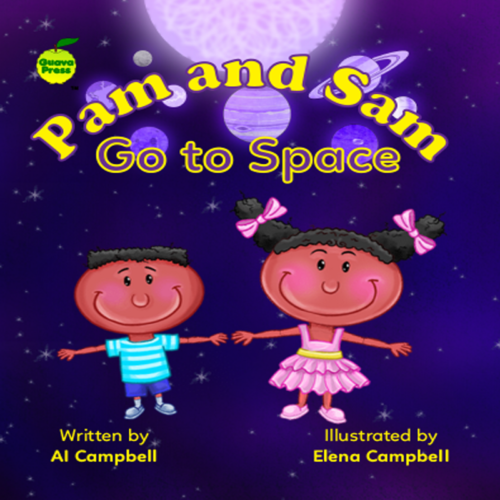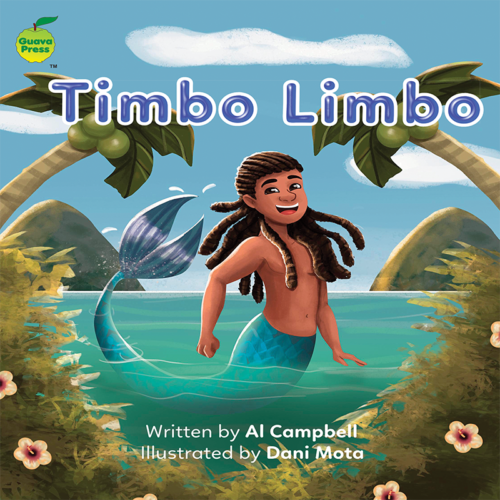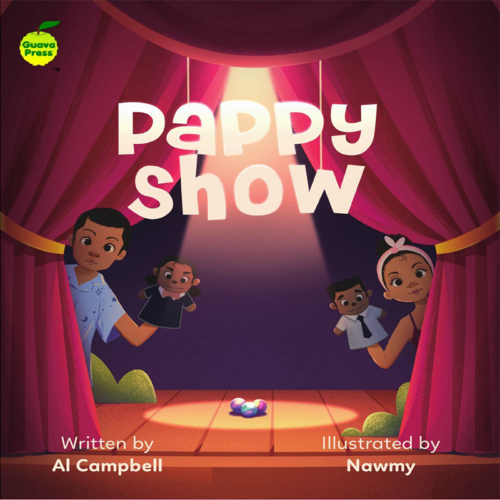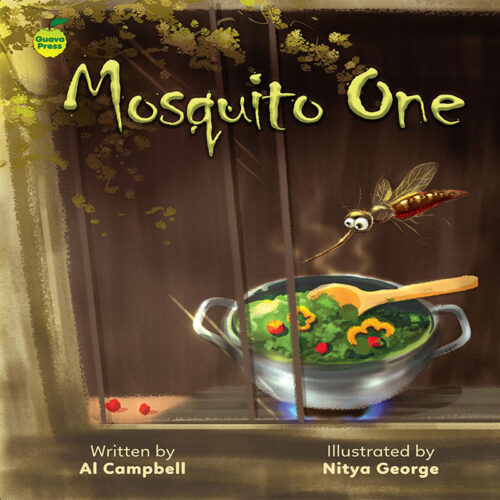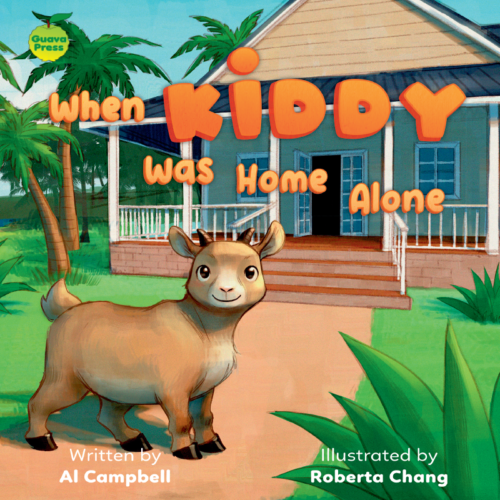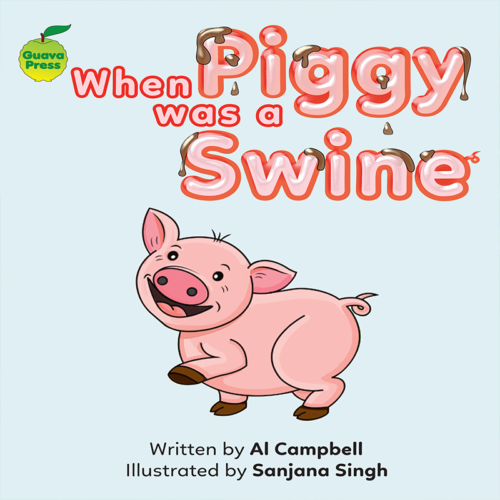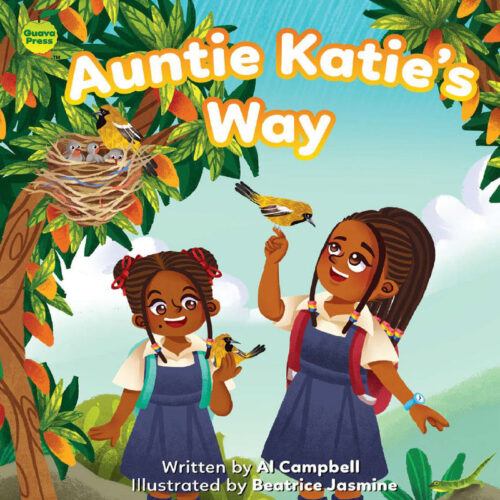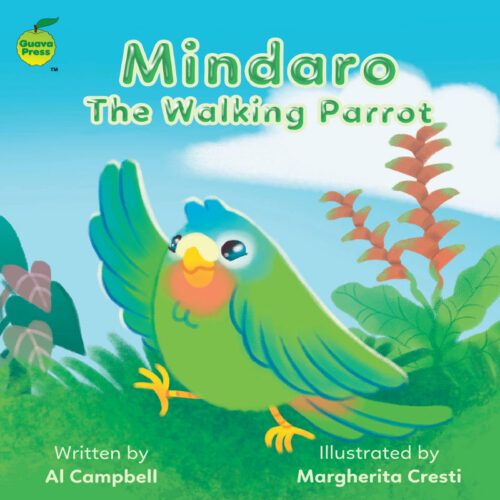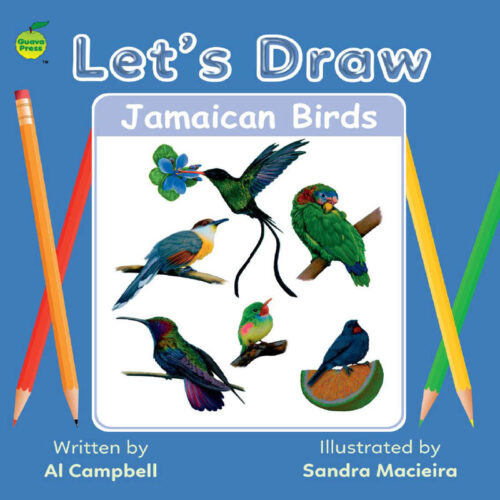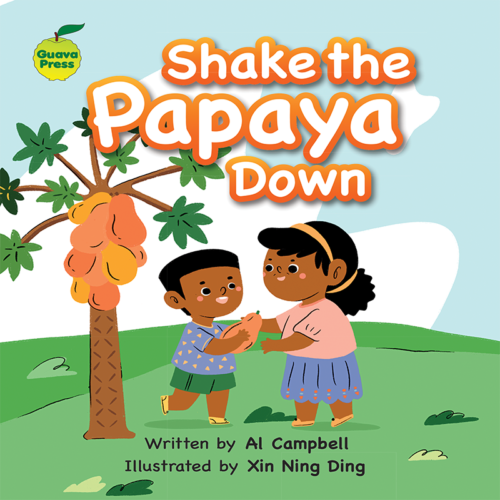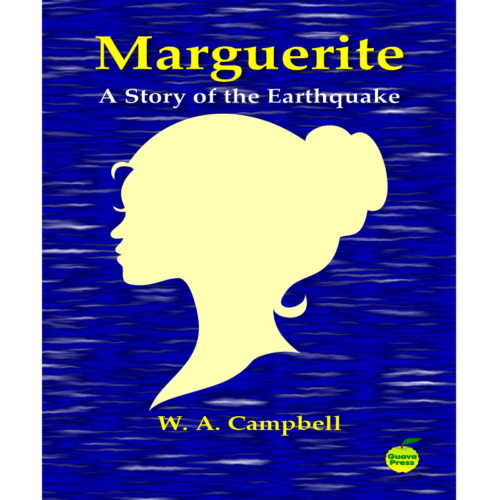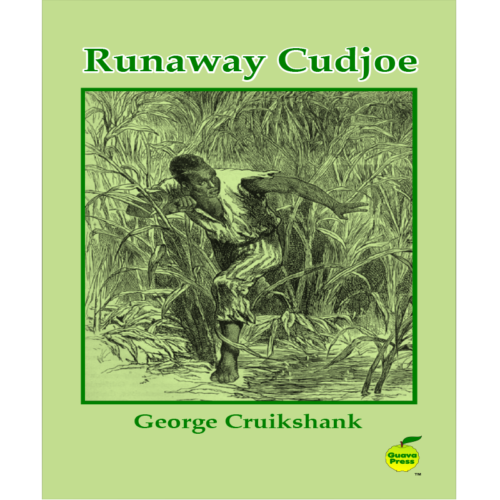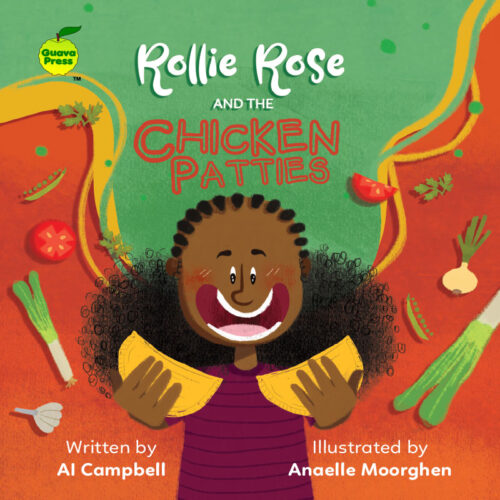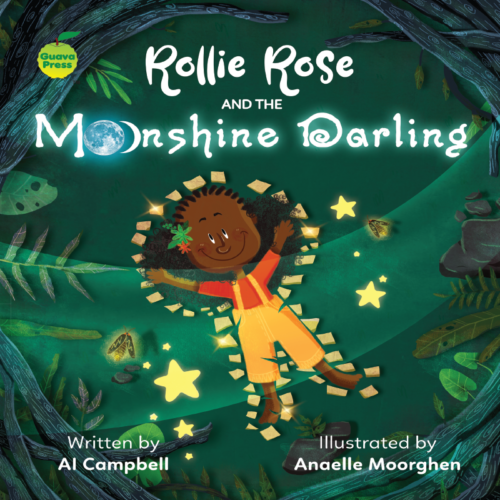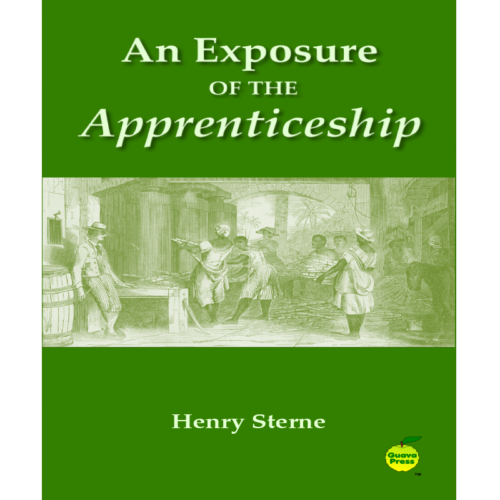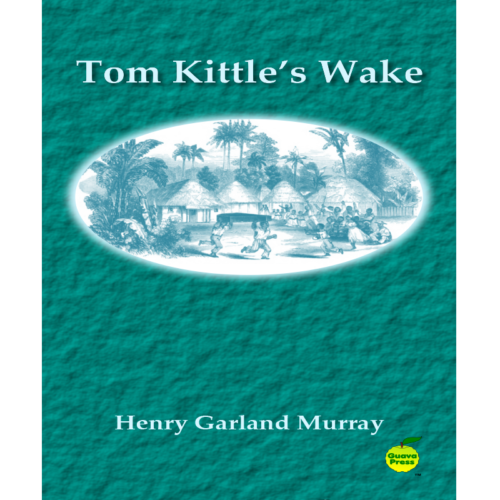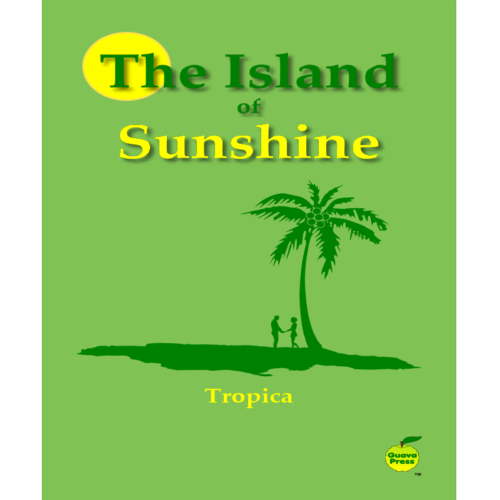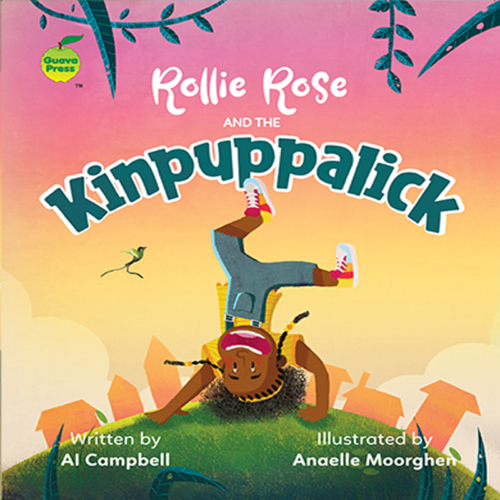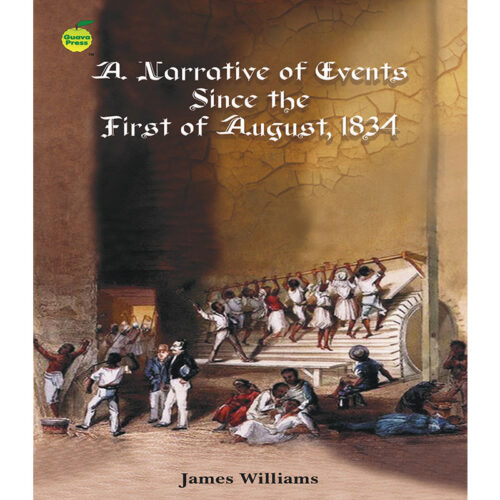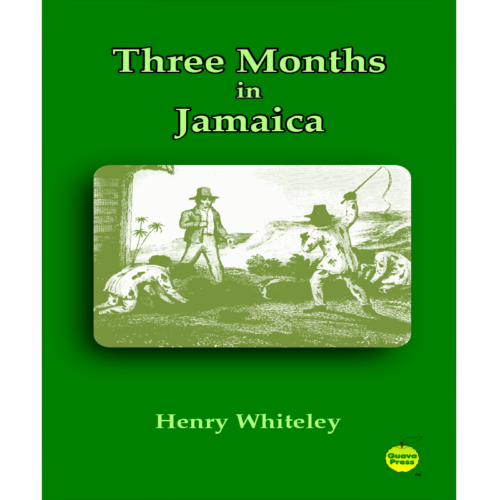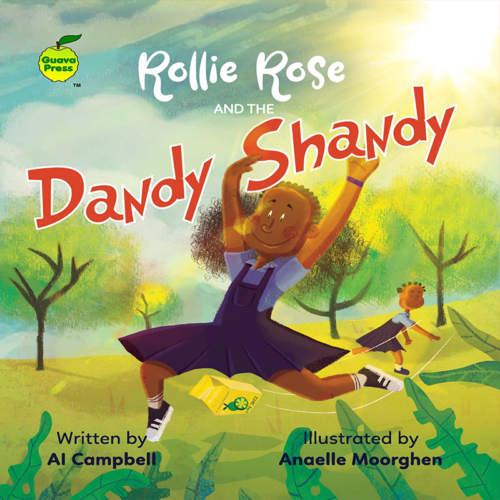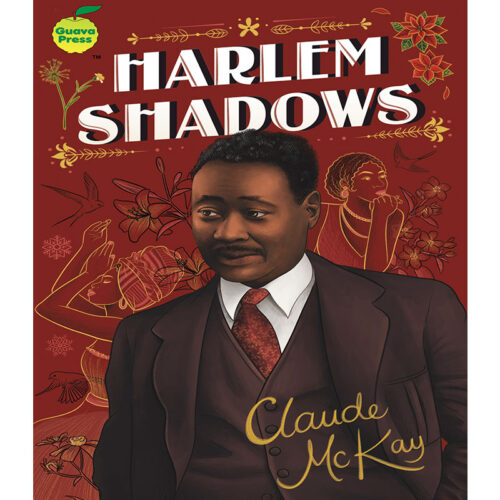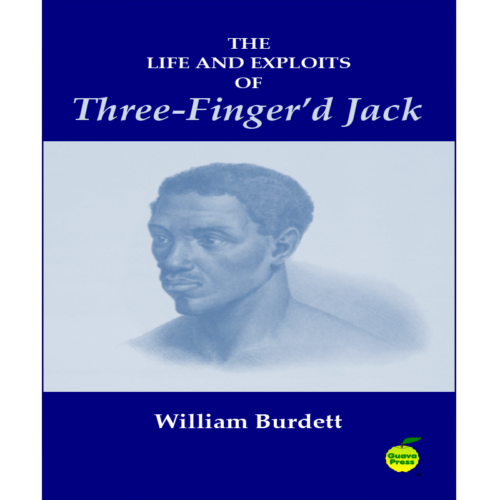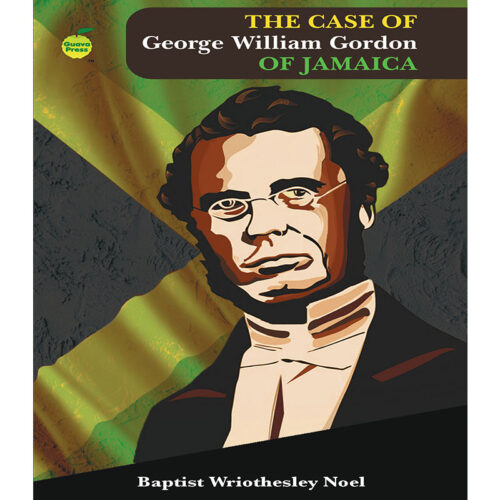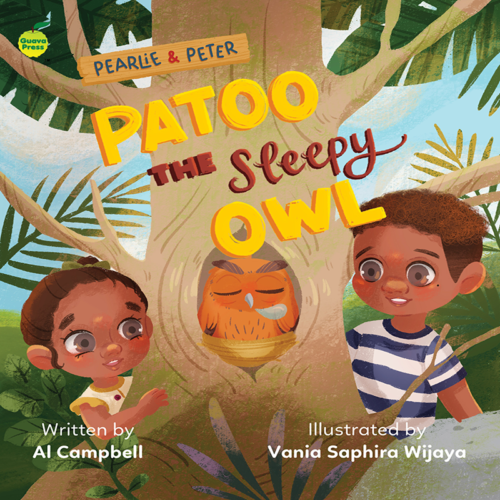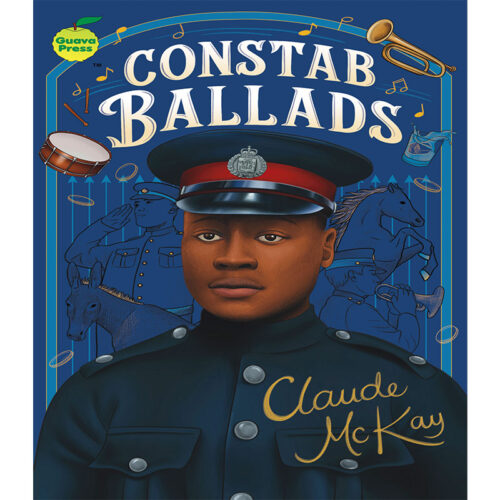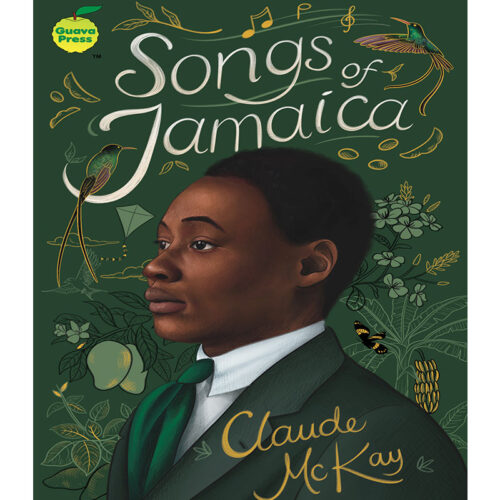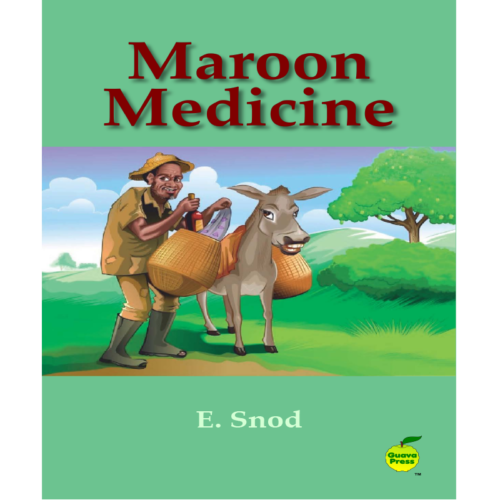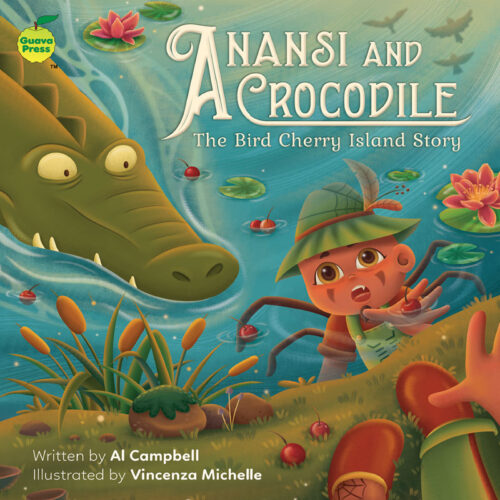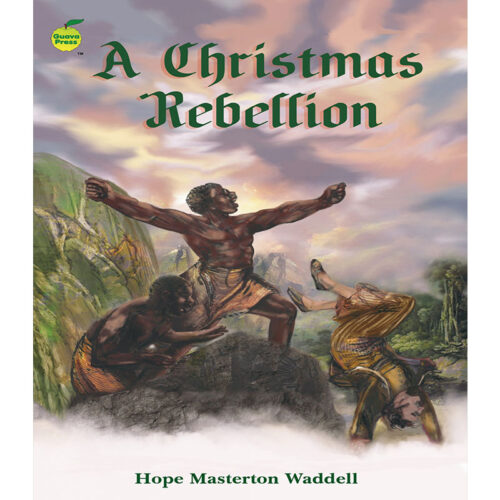-
Edited By Al Campbell In this volume are thirty of Jamaica’s most-loved folk songs. These thirty folk songs have been sung over and over again to the never-ending delight of people, generation after generation. Here are children’s play songs, work songs, dance songs, satirical tales, and many more. All have delightful lyrics. All are for having fun. And all of them also capture the heart and soul of the Jamaican people’s cultural heritage. These folk songs are the true expressions of Jamaican character and customs. (1) MOONSHINE TONIGHT (2) THERE IS A BROWN GIRL IN THE RING (3) JANE AND LOUISA (4) DIS LONG TIME GAL ME NEVER SEE YUH (5) UNDER THE COCONUT TREE (6) COME BACK LIZA (7) ROOKUMBINE (8) DAY OH! (9) DE RIVER BENG COME DOWN (10) BY THE RIVERS OF BABYLON (11) HILL AN’ GULLY RIDE (12) DIP DEM BEDWARD (13) COLÓN MAN A COME (14) ME GO DOWN A MANUEL ROAD (15) COME WE GO DOWN A SOLAS MARKET (16) ME DONKEY WANT WATER (17) SAMMY DEAD OH! (18) JOHN CROW SAY HIM NAH WUK PAN SUNDAY (19) CHI-CHI BUD OH! (20) SLY MONGOOSE (21) BEFORE ME MARRIED (22) JUDY DROWNDED (23) BAD MIND PEOPLE (24) DE BUGGY BRUK (25) DRY-WEATHER HOUSE (26) DIP AN’ FALL BACK (27) MANGO TIME (28) ME COFFEE (29) MAN PIABA (30) CARRY ME ACKEE GO A LINSTEAD MARKET
-
By Al Campbell and Illustrated by Elena Campbell One starry night Pam and her little brother Sam closed their eyes and imagined that they were floating in space. The children journeyed through the planets in our amazing solar system. Read, enjoy and learn about each planet’s closeness to the sun, how each spins, their different colours and sizes, as well as which ones are solid or made of gas. This storybook is perfect for early curious readers.
-
By Al Campbell and Illustrated by Dani Mota Lydia is mistreated and unhappy at home until one day she goes to fetch water at the river and meets Timbo Limbo. Find out what happens next as Lydia and Timbo Limbo discover a rare happiness together in this lonely world. Read and enjoy this retelling of a traditional Jamaican story, admire the captivating illustrations, and learn more about one of history’s most enduring myths – the origin of certain underwater life! This storybook is for early readers.
-
By Al Campbell and Illustrated by Nawmy Kevin puts on a puppet show for his little sister Keisha. He calls it “Pappy Show” and it takes surprising twists and turns, including the visit of a donkey. As the children play, they also learn a very valuable secret of life. Join in the adventure as the boy tells a tall tale and his sister plays merrily along. • Let your imagination run wild on every page • Sing donkey songs and learn their names • Learn a dozen donkey facts • Learn a dozen donkey proverbs • Read together and encourage participation This storybook is packed with fun for everyone.
-
By Al Campbell and Illustrated by Nitya George “Mosquito one, mosquito two, Mosquito jump in the hot callaloo!” Have fun with this Jamaican nursery rhyme, while also playing around with numbers. Learn about these tiny insects and how to protect yourself from mosquito-borne diseases like malaria, dengue, the Chikungunya and Zika viruses.
- Play ‘I-spy with my little eye’ on every page
- Enjoy counting the mosquitoes
- A fun way to learn how to count
- Read together and encourage child participation
-
By Al Campbell and Illustrated by Roberta Chang “This is the story of when Kiddy was home alone. On that fateful day the goat wandered and roamed.” Go along with Kiddy on her crazy adventures as she enters Boysie’s home and wreaks havoc everywhere. The naughty she-goat makes a mess in the kitchen, plays dress-up, takes a bath and gets into some really BIG trouble! Find out about Kiddy’s many calamities on that eventful day. Read and learn simple rhymes, as well as admire the amusing and charming illustrations. This storybook is perfect for early readers.
-
By Al Campbell and Illustrated by Sanjana Singh “Once upon a time when Piggy was a swine, she jumped over a clothesline and hurt her behind.” Go along with little Piggy on her crazy adventures adapted from a traditional Jamaican rhyme. Read and learn simple rhymes, pig songs, pig nursery rhymes, and pig proverbs. This storybook is perfect for early readers.
-
One morning Lisa and Una are walking
to school when they see two birds in a tree.
What kind of birds do they see?
They see pretty yellow Auntie Katies.
Find out what happens next as the sistersmarvel at the wonderful birds, andeventually witness a tragedy.
Read and enjoy this moving story
about amazing things in our environment,
admire the charming illustrations, and learn
why even birds can teach us valuable lessons
to help us to live better lives.
This storybook is perfect for young readers. -
Mindaro is a young Yellow-billed Parrot
who is afraid to fly. He walks everywhere
and he also imagines all the bad things
that could happen if he flies.
Trod along with Mindaro through his tropical land
as family members and friends
are asked to help teach him how to fly.
Read and enjoy this heart-warming story,
admire the attractive illustrations, and learn
how a little courage can help to overcome fears. This storybook is perfect for early readers -
Jade and her twin brother Jamal live on
the beautiful tropical island of Jamaica.
One morning the siblings draw pictures
of a dozen gorgeous Jamaican birds.
Read and enjoy this captivating story
of art and nature appreciation. Learn
about wonderful Jamaican birds, their
amazing colours, scientific names, the sounds
they make, and so much more. Also admire the
many wonderful and enchanting avian illustrations.
This storybook is perfect for early readers
who are curious about birds and nature.
• Read and learn about unique Jamaican birds
• Trace, draw, and colour the plumage of birds
• A fun way to learn common and scientific names
• Read together and encourage child participation -
By Al Campbell and Illustrated by Xin Ning Ding “Charlie, get up! Get up with the rising sun!” Join Charlie and his mother as they pick and count one dozen papayas. Along the way they also discover many different uses for the delicious fruit. Enjoy this heart-warming story that has been adapted from a traditional Jamaican song. • Enjoy counting the papayas • A fun way to learn how to count • An easy way to read and learn division • Discover different uses for papayas • Read together and encourage child participation This storybook is perfect for early readers.
-
One morning Cherry Berry wakes up to
discover that a hurricane is headed for
her tropical island home. She must help
her family prepare for the big storm. Find out what happens next as Cherry and
her older brother Yohan do many things
inside and outside the house to get ready. Read and enjoy this Cherry Berry story,
marvel at the beautiful illustrations, and
learn some of the simple things to do
around the home before a hurricane hits. This storybook is perfect for early readers. -
By W. A. Campbell W. A. Campbell’s Marguerite is a love story set against the backdrop of the earthquake that devastated Kingston and surrounding areas of the island of Jamaica in 1907. This novella was one of the rare attempts to capture some of the delicate social and psychological tensions that existed in the island's colonial society at that time. An excerpt from Marguerite: A Story of the Earthquake: For several months George had been keeping his affection for Marguerite in check, and had been persuading himself that it was a case of “very good friends.” His sense of humour was too strong to admit of his entertaining thoughts of marriage on £100 per annum, and he knew that if he married against his father’s ideas of “equality,” his allowance of £60 was gone.
-
By Al Campbell and Illustrated by Châu Phạm Cherry Berry sneaks out of her home and runs into a forest to find the “pot of gold” at the end of a rainbow. Find out what happens next as Yohan chases his little sister and tries to save her from dangers lurking in the forest. Read and enjoy this adventurous Cherry Berry story, admire the enchanting illustrations, and learn more about one of nature’s most amazing wonders – beautiful multi-coloured rainbows! This storybook is perfect for early readers.
-
By George Cruikshank George Cruikshank’s Runaway Cudjoe (1856), tells the true story of a runaway slave in 1820s Jamaica. Cudjoe escapes into the mountains where he lives for the first time as freed man with other runaways. Their liberty is constantly under threat from the British military on the hunt. This story reveals the strong resistance that some Jamaicans demonstrated in their fight against slavery.
-
Rollie Rose loves food and one day she discovers the joy of eating delicious chicken patties. “Yummy, yummy!” says Rollie Rose. Join Rollie Rose and her family as together they find happiness in preparing and eating the special food they love. Children will delight in reading all about this tasty Jamaican treat. Read and enjoy this fun-filled Rollie Rose story, admire the wonderful illustrations, and learn how a family can share special moments. This storybook is perfect for early readers
-
By Alexander Falconbridge Alexander Falconbridge was a surgeon on slave ships that carried African slaves from the West African Coast to the Caribbean. In An Account of the Slave Trade on the Coast of Africa he describes the many and varied aspects of this despicable trade that was legally undertaken for centuries. The description starts from when the mostly English and French ships first dock along the West African coast and the captains go ashore to acquire Africans. He then explains how the slaves were captured and brought to the coast to be sold. The process is explained, including their treatment during the Middle Passage across the Atlantic Ocean, to when they were sold into hereditary bondage in the Caribbean. An excerpt from An Account of the Slave Trade on the Coast of Africa: The slave ships generally lie near a mile below the town, in Bonny River, in seven or eight fathom water. Sometimes fifteen sail, English and French, but chiefly the former, meet here together. Soon after they cast anchor, the captains go on shore, to make known their arrival, and to inquire into the state of the trade.
-
By Al Campbell and Illustrated by Anaelle Moorghen “Cry, cry baby, Moonshine darling, Take off your shoes, And go to bed!” Join in the big fun with Rollie Rose and friends as they celebrate her birthday and play an exciting Jamaican night-time game. Children will delight in reading about how to make a moonshine darling, as well as learn how to turn a bad thing into a good result! Read and enjoy this cheerful Rollie Rose story of treasuring one’s cultural heritage, as well as admire the charming illustrations. This storybook is perfect for early readers.
-
By Sarah Ellis Mimba by Sarah Ellis tells the story of a domestic slave in Jamaica, who is unable to live in freedom with her beloved fiancé, Martin. When Martin informs her of his intention to free both of them from slavery, she has a decision to make. The story was first published 1850 from facts sourced from Edward Long’s History of Jamaica.
-
By Henry Sterne Henry Sterne’s An Exposure of the Apprenticeship documents some of the unfair incidences that unfolded during the Apprenticeship period in Jamaica, which lasted from August, 1834 to July, 1838. Sterne outlines cases where the system operated mostly to the benefit of the former slave-masters and to the detriment of “the apprentices,” mostly because interpretation and enforcement of the law was left up to the discretion of biased special magistrates. An excerpt from An Exposure of the Apprenticeship: On the 1st of August, 1834, and until very lately, I was an inhabitant of a populous country parish, called Saint George’s. This parish has been noted in the annals of Jamaica for what is, out there, termed rebellion. Of this, then, most rebellious parish, do I now speak, from a lengthy, personal knowledge and observation.
-
By Henry Garland Murray Henry Garland Murray’s Tom Kittle’s Wake (1877), recalls the story of a Jamaican fisherman, as well as his eventual wake. The author was a late nineteenth century newspaper editor and popular storyteller, who was probably the first person to write and publish his work in Jamaican Patois. An excerpt from Tom Kittle’s Wake: Old Tom Kittle was a fisherman, and in his time had been notable in that respect. He had had many a “hairbreadth ’scape” and had been the hero of many a deed that might have won a place in story; but he had not been wont to recount them, for the reason that he never at any time thought of them as highly as other people did.
-
By Mary O. Walcott The Island of Sunshine by Mary O. Walcott (aka Tropica) was first published in 1904. The poignant verses draw upon metaphors to celebrate her island home of Jamaica. The poet offers original and inspiring reflections on the island’s unique flora and fauna, while also allowing glimpses into a colonial society. An excerpt from The Island of Sunshine: O quaint old isle of hidden dreams! Thy lonely paths, thy silent streams, Thy woods and ancient ruins hold Many a charming tale untold. This collection includes poems such as: -The Light between the Logwood Leaves -Ferns -Song of the Coffee Field -To the Donkey -The Heart of the Island -Rose Hall -When the Sunlight Touches the River -An Island Spring -Under the Roseapple Boughs -In a Banana Walk -Job’s Tears -Blinkeys
-
By Al Campbell and Illustrated by Anaelle Moorghen Kinpuppalick! Say what? What’s that? Children will delight in reading about Kinpuppalick, the Jamaican word for somersaults. Say it, Kinpuppalick! Join Rollie Rose as she enjoys doing amazing somersaults. She loves to do body flips but only when she gets a new friend does she discover another word for her fun activity — Kinpuppalick! Read and enjoy this rollicking Rollie Rose story of true friendship and carefree fun that’s perfect for early readers.
-
By James Williams In A Narrative of Events Since the First of August, 1834, James Williams, a Jamaican “apprentice” (former slave), describes his experiences under the British apprenticeship system that was established as a transition period from slavery to free labour to facilitate the gradual abolition of slavery within the British empire in 1833. His account tells of the brutal punishments he had to endure, including numerous floggings and imprisonments. He also describes the prison conditions where the use of the treadmill was common, as well as how women were constantly abused in many ways. Williams concludes that the system of apprenticeship worsened the conditions of Jamaican ex-slaves, as the former slave-owners used the Jamaican legal system to constantly harass and punish them. An excerpt from A Narrative of Events Since the First of August, 1834: I have been very ill treated by Mr. Senior and the magistrates since the new law come in. Apprentices get a great deal more punishment now than they did when they was slaves; the master take spite, and do all he can to hurt them before the free come;—I have heard my master say, “Those English devils say we to be free, but if we is to free, he will pretty well weaken we, before the six and the four years done; we shall be no use to ourselves afterwards.”
-
By Henry Whiteley In 1832, Henry Whiteley, a young Methodist clergyman, travelled to Jamaica on a mission to preach the gospel to the Negro slaves and convert many to Christianity. Three Months in Jamaica is Whiteley’s account of that visit. The account was published in June 1833, and is one of the few remaining records of the working conditions and methods of punishment that existed on Jamaican sugar plantations during the period (1655-1838) when the British system of slavery existed throughout the island. An excerpt from Three Months in Jamaica: I proceeded on horseback to New Ground estate the next day. On my way thither I saw much majestic arid beautiful scenery, and enjoyed the prospect exceedingly, until I came in sight of a gang of negroes at work. Most of them were females; and they were superintended by a driver, with the cart-whip in his hand. Just as I rode past, the driver cracked his whip and cried out, “Work! Work!”
-
By Al Campbell and Illustrated by Anaelle Moorghen “Come; let’s play a game of dandy shandy! Let’s throw the juice box and find out who can dodge and leap out of its way!” Join Rollie Rose and friends at recess as they play a game of dandy shandy. Children will delight in reading about this exciting traditional Jamaican outdoor game. Read and enjoy this fun-filled Rollie Rose story, marvel at the lively illustrations, and learn how friends can share special moments. This storybook is perfect for early readers.
-
By Claude McKay Claude McKay was one of the twentieth century’s finest poets and Harlem Shadows (1922) collects some of his most moving, lyrical verses which capture his nostalgia for Jamaica, as well as his empathy for the unjust plight of Black people in the United States and around the world. These are passionate poems, that are full of calls for human decency, dignity and justice in a needlessly cruel world. In ‘If We Must Die,’ McKay asserts: “If we must die, let it not be like hogs Hunted and penned in an inglorious spot, While round us bark the mad and hungry dogs, Making their mock at our accursed lot.” This collection includes poems such as: -THE EASTER FLOWER -FLAME-HEART -THE SPANISH NEEDLE -ENSLAVED -I SHALL RETURN -MORNING JOY -AFRICA -ON A PRIMITIVE CANOE -THE HARLEM DANCER -THE CASTAWAYS -THE LYNCHING -IF WE MUST DIE
-
By Tom Redcam Becka’s Buckra Baby by Tom Redcam (Thomas Henry MacDermot) was first published in 1905. The novella explores the social implications and unforeseen consequences when a young lady gives a black girl the Christmas gift of a white doll.
-
By William Burdett William Burdett’s The Life and Exploits of Three-Finger’d Jack (1801), tells the story of Jack Mansong, an African who was captured, taken to Jamaica and forced into slavery. Jack escaped from the sugar plantation where he was forced to do slave labour by the British and ran to the mountains of the island. There he led a guerrilla group of around sixty rebels who fought, during the 1780s, for freedom that was not attained until well over fifty years after. Jack Mansong is one of the unsung heroes of Jamaica.
-
By Baptist Wriothesley Noel The Case of George William Gordon, Esq., of Jamaica by Baptist Wriothesley Noel examines the events that led to the execution by hanging after the Morant Bay Rebellion in 1865 of The Right Excellent George William Gordon, National Hero of Jamaica. Noel details Gordon the successful businessman, Christian and family man, as well as the flimsy and unfair charges brought against him by the colonial government for suspicion of having planned the rebellion. An excerpt from The Case of George William Gordon, Esq., of Jamaica: As a Christian and a man of strong affections it was impossible that he should not use his influence to protect the weak from suffering wrong. More than many rich men do, he resembled the patriarch, who could say of himself, “When the ear heard me, then it blessed me; and when the eye saw me, it gave witness to me: because I delivered the poor that cried, and the fatherless, and him that had none to help him. I was a father to the poor, and the cause that I knew not I searched out; and I break the jaws of the wicked, and plucked the spoil out of his teeth.”
-
Patoo! Who’s that? You don’t know Patoo?Children will be happy to read about Patoo,
a lovable Jamaican name for owl.
Join Pearlie as she listens to her brother Peter’s
legendary tale about an old sleepy owl called Patoo.
Read and enjoy this moving story
about living in harmony with each other, as well as
with our environment, admire the beautiful illustrations,
and learn why we like to think that owls are wise.This storybook is perfect for early readers. -
By Claude McKay Claude McKay was one of the twentieth century’s finest poets and Constab Ballads (1912) was his second published work, after Songs of Jamaica earlier that year. This collection was also written in Jamaican Patois and was largely based on his experiences while serving as a police constable in Spanish Town. The poems are an alluring combination of traditional verses, dramatic monologues and confessional love lyrics. This collection includes poems such as: - DE ROUTE MARCH - FLAT-FOOT DRILL - PAPINE CORNER - COTCH DONKEY - A RECRUIT ON THE CORPY - PAY-DAY - KNUTSFORD PARK RACES - THE HEART OF A CONSTAB - FE ME SAL - THE MALINGERER - A LABOURER’S LIFE GIVE ME - SUKEE RIVER
-
By Claude McKay Claude McKay was one of the twentieth century’s finest poets and Songs of Jamaica (1912) was his first published work. This is a pioneering collection written in Jamaican Patois, the first of its kind. In the opening poem ‘Quashie to Buccra’ he begins by asserting the labourer’s voice: “You tas’e petater an’ you say it sweet, But you no know how hard we wuk fe it; You want a basketful fe quattiewut, ’Cause you no know how ’tiff de bush fe cut.” This collection includes poems such as: - QUASHIE TO BUCCRA - KING BANANA - SCHOOL-TEACHER NELL’S LUB-LETTER - HARD TIMES - CUDJOE FRESH FROM DE LECTURE - MOTHER DEAR - KILLIN’ NANNY - MY NATIVE LAND, MY HOME - BENEATH THE YAMPY SHADE - TO CLARENDON HILLS AND H. A. H. - WHEN YOU WANT A BELLYFUL - STROKES OF THE TAMARIND SWITCH
-
By E. Snod Maroon Medicine by E. Snod (E. A. Dodd) is a collection of four short stories that portray the lighter side events in the Jamaican countryside. The four fictional stories: “Maroon Medicine,” “Paccy Rum,” “The Red Cock,” and “The Courting of the Dudes,” are sketches from rural Jamaican life in the early 1900s. They are humorous, as well as give valuable insights into people’s lives during that period.
-
One morning three seabirds invite Brother Anansi to fly with them to Bird Cherry Island. He doesn’t have wings but they find a way for him to go along with them to pick delicious cherries. Find out what happens next in this lively and amusing Anansi adventure because on the island the cunning spider man also meets Crocodile, and of course, tries to trick the trusting reptile. Read and enjoy this traditional Anansi story, with an appearance by Crocodile’s loving wife, as well as a chance encounter with a couple of triggerfish. Also admire the magnificent illustrations, and discover how the crafty spider man is once again able to survive against all the odds. This storybook is chock-full of fun for young readers.
-
By Hope Masterton Waddell Hope Masterton Waddell was a missionary in Jamaica when a slave uprising started after December 25, 1831, which lasted into the first weeks of 1832. A Christmas Rebellion is Waddell’s recollection of this rebellion that is considered the largest slave rebellion in the British Caribbean. The uprising was also called the Baptist War because many of the rebels were Baptist denomination. An excerpt from A Christmas Rebellion: Early in December 1831 rumours of an impending servile war began to spread abroad and agitate the community. The slaves, it was said, had bound themselves by a solemn oath to each other to be slaves no longer. The conspiracy was discovered on Salt Spring estate, near Montego Bay, from the mysterious and threatening language of an angry negro to his overseer, which aroused suspicion, led to investigation, and thereby brought to light the whole scheme. The time was near for its being carried into effect, yet nothing seemingly could be done beforehand to prevent it.

